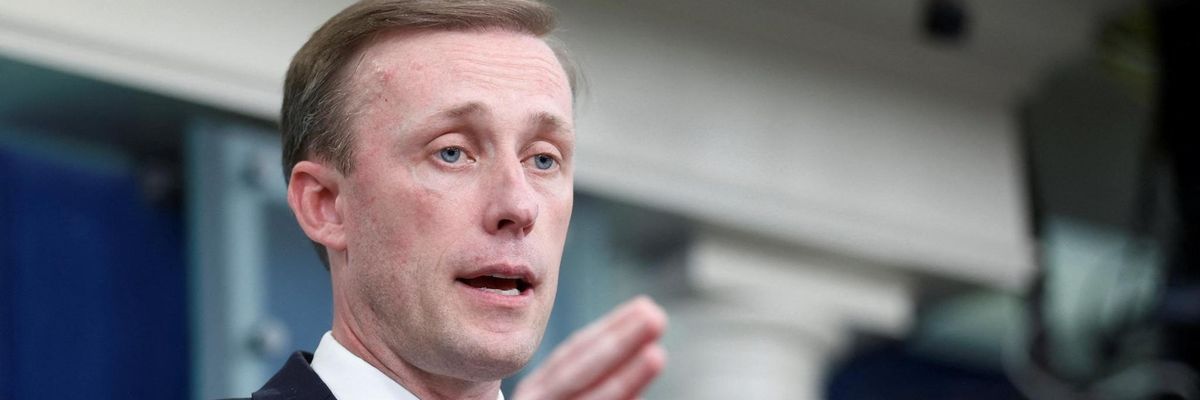Following a tense few months of superpower shadowboxing, a flurry of talks have broken out between the United States and China.
On Monday, U.S. Ambassador to Beijing Nicholas Burns met with Foreign Minister Qin Gang for the first time since an apparent Chinese spy balloon knocked U.S.-China ties off course earlier this year.
But the main attraction came on Wednesday and Thursday, when National Security Adviser Jake Sullivan sat down with Wang Yi — China’s top diplomat — for over eight hours of talks that the White House described as “candid, substantive, and constructive.”
The pair discussed a series of thorny issues, including bilateral ties, the war in Ukraine, and rising tensions over Taiwan. In readouts from the talks, each side emphasized the importance of keeping open channels of communication and the need to stabilize relations between the two great powers.
Experts say the meetings are a welcome step, but concrete steps are still needed to reassure observers that ties are improving. “What is needed on both sides is a recognition of the fact that they both contribute to the downward slide in relations and thus both need to be willing to take actions to arrest that slide,” said Michael Swaine of the Quincy Institute.
“Countries around the world, including close U.S. allies, are looking for meaningful progress toward stabilizing the relationship and averting a crisis or worse over Taiwan,” Swaine added. “So has this meeting begun a process toward that end? And if so, when will we see tangible signs of such progress?”
Following the balloon incident, Secretary of State Antony Blinken canceled a major planned visit to China that has yet to be rescheduled. Tensions rose in the ensuing months, with each side trading barbs over Taiwan.
Beijing was particularly incensed at Speaker Kevin McCarthy’s high-profile meeting with Taiwanese President Tsai Ing-wen, in addition to a spate of recent U.S. arms sales to Taiwan that China viewed as a sign that President Joe Biden was not truly committed to deescalation.
As ties continued to worsen, a top Pentagon official said late last month that China was no longer “picking up the phone when we’re calling them.”
“From Beijing’s perspective, Biden is gaslighting [Chinese President] Xi [Jinping], and a resumption of high-level talks would only serve to further encourage and legitimize this behavior,” reporter Ethan Paul argued in RS last week.
It’s unclear what led Beijing to change course so quickly. One possible explanation came yesterday, when Reuters revealed that, after the balloon incident, the U.S. decided to delay a number of “planned actions against China” in order to separate the flare in tensions from other aspects of the bilateral relationship.
Regardless of why it’s happening now, reengagement could create significant upside for both parties, especially when it comes to the war in Ukraine, according to Anatol Lieven and Jake Werner of the Quincy Institute.
The Biden administration “can build on this meager but noteworthy shift in tone, recognizing that U.S. and Chinese interests are more often aligned than opposed, and explore what might be accomplished when the two most powerful countries in the world step away from confrontation,” Lieven and Werner wrote in RS today.
Hidden in the spate of recent talks was a meeting between Ambassador Burns and Beijing’s commerce minister, Wang Wentao. Burns described the conversation as an “open and detailed discussion on the bilateral trade relationship,” which has faced significant pressure as many in Washington push for a “decoupling” of the U.S. and Chinese economies.
As economist Adam Tooze recently noted, a less capricious approach to bilateral trade would go a long way toward calming relations between the two powers and avoiding a new cold war.
“[I]t is hard to see how [Washington’s current approach], in which the United States arrogates to itself the right to define which trajectory of Chinese economic growth is and is not acceptable, can possibly be a basis for peace,” Tooze argued. “If the United States is still interested in global economic and political order, and it surely should be, it must be open to negotiate peaceful change. Otherwise, it is simply asking for a fight.”
















